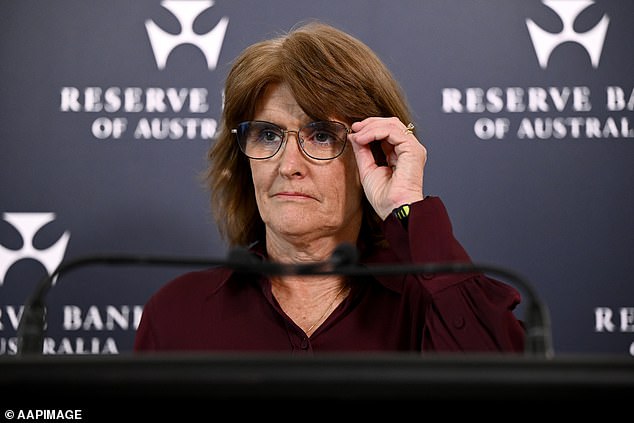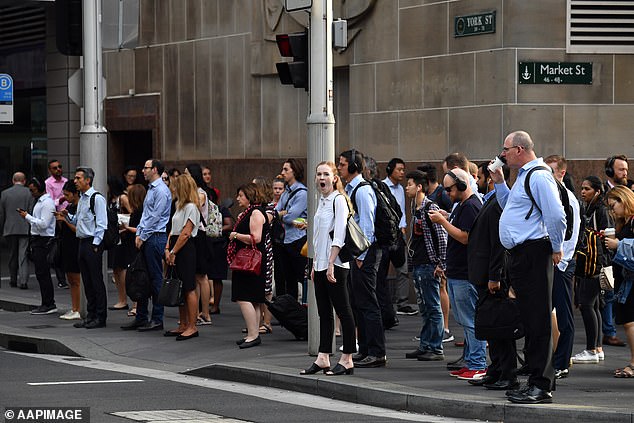Job seekers still have more options for open positions compared to pre-pandemic levels, even as the average number of postings each week continues to fall.
Since the end of 2023, job posting volumes have fallen 8.2 percent, reflecting a gradually weakening labor market as the economy slows.
Even with a 2.1 per cent drop in the month of May alone, job posting figures recorded by ANZ and Indeed remain 20 per cent above pre-pandemic levels.
Demand for workers has proven resilient and the unemployment rate is low even though economic activity has slowed in response to higher interest rates.
Since the end of 2023, the volume of job advertisements has fallen by 8.2 percent, reflecting a gradually weakening labor market as the economy slows (pictured, official workers in Sydney)
May labor force data from the Australian Bureau of Statistics showed the unemployment rate fell back to four per cent from 4.1 per cent in April, and 39,700 jobs were added to the economy, up slightly more than consensus forecasts.
The Reserve Bank of Australia, which begins its two-day interest rate meeting on Monday, expects the labor market to relax very slowly after its aggressive series of interest rate hikes that began in 2022.
ANZ economist Madeline Dunk said the labor market was cooling, but very gradually.
“The trajectory of job postings suggests we will see continued moderation in the labor market over the next year,” he said.
Ahead of the June interest rate meeting, the RBA’s shadow board of macroeconomists said the labor market presented a “complex picture with mixed signals”.

Pictured is Reserve Bank Governor Michele Bullock in May 2024.
However, even with the unemployment rate falling and employment growth driven by full-time positions, the shadow board said wages were only growing slightly faster than consumer prices and were not increasing significantly. inflationary pressures.
The shadow board recommended keeping the overnight cash rate at 4.35 percent, as most economists forecast, although it noted that “risks have shifted slightly to the downside since the last round.”
In recent communications, the RBA has left its options open on moves up or down rates, preferring not to “rule anything in or out” and choosing to remain receptive to incoming data.
The post-meeting statement and press conference with Reserve Bank Governor Michele Bullock should provide more insight into the bank’s assessment of the economy following the latest set of data.

